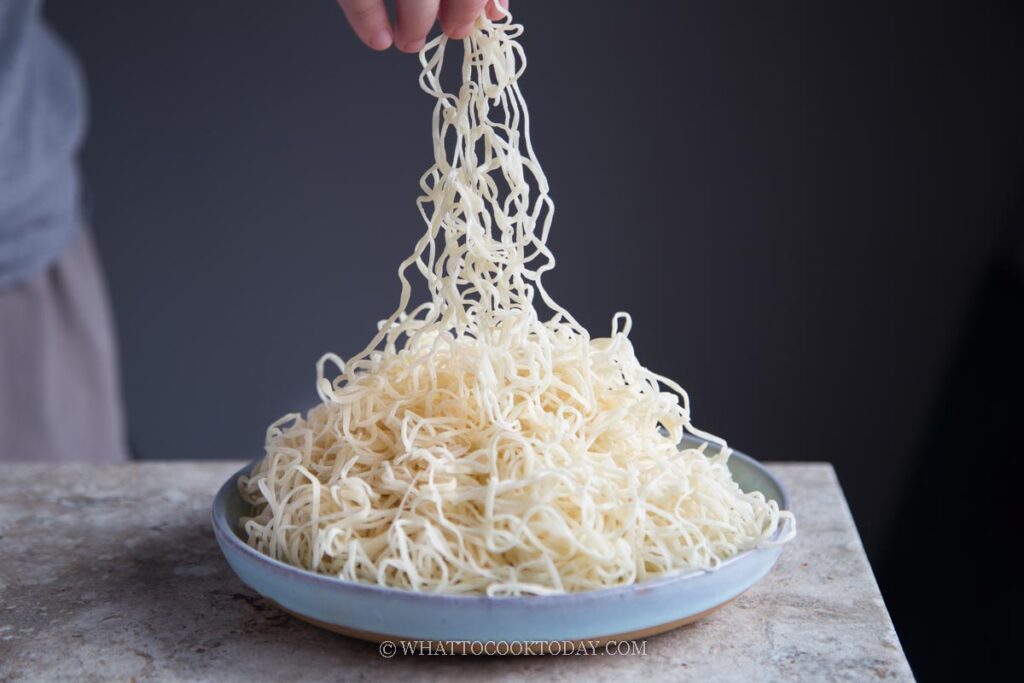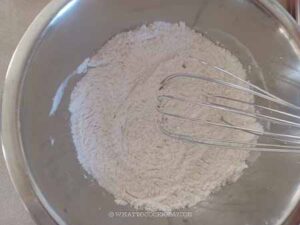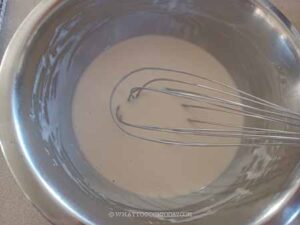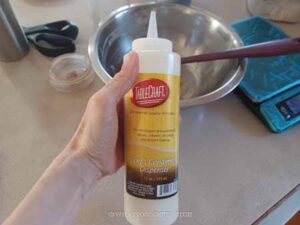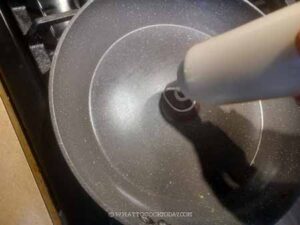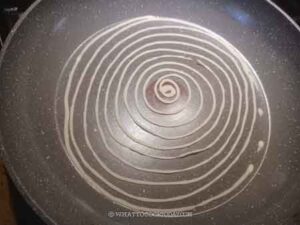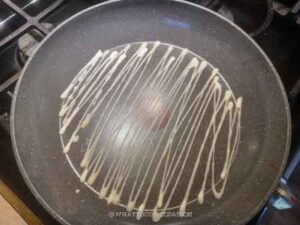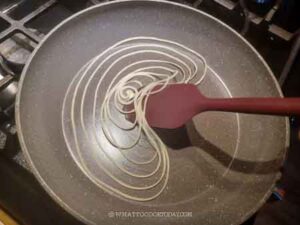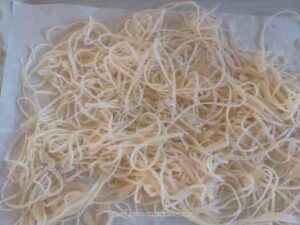This post may contain affiliate links. Please read our disclosure policy.
If you’ve ever wanted to try making kataifi dough at home, I say go for it. It’s way easier than it looks, and honestly? It’s kind of mesmerizing to watch the strands form in the pan.
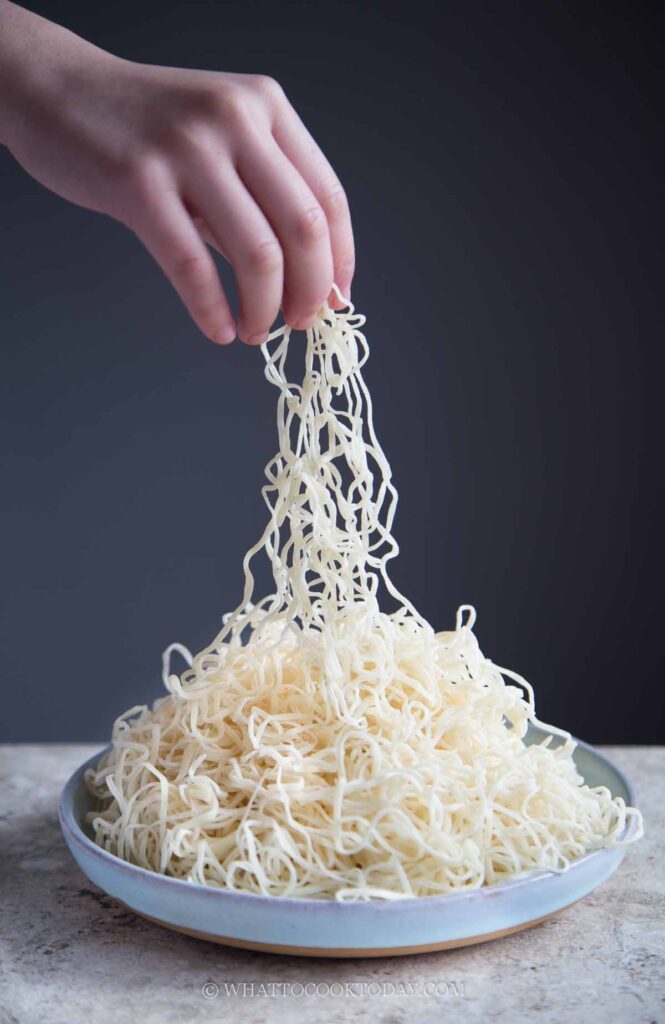
Okay, so let me start by saying: making kataifi dough (yes, that shredded, hair-like filo dough you see in all those fancy Middle Eastern and Greek desserts) at home is way less scary than it sounds. I used to think it was something only big commercial machines could make—until I tried it myself. Spoiler: it’s totally doable, and kind of fun, too.
So if you’ve ever seen kataifi (also spelled kadaif) in a dessert like Greek baklava rolls or Turkish künefe and thought, “What sorcery is this?”, I’ve got you. We’re basically going to make a super thin batter and turn it into delicate little noodle strands with just a squeeze bottle and a frying pan. I mean… how cool is that?
Wait, What Is Kataifi Dough?
Great question. Kataifi dough is kind of like filo’s quirky cousin—made from the same basic ingredients but spun out into fine threads instead of thin sheets. The result? This incredibly crisp, airy texture works magic in sweet and savory dishes.
You can wrap it around cheese, nuts, seafood, or just shape it into little nests to bake. My favorite part? That satisfying golden crunch after it’s baked. Yes, please.
How to Make Kataifi Dough (a.k.a. Shredded Filo Pastry) at Home
Ingredients
- 100 g all-purpose flour
- 75 g cornstarch
- 1 tsp sugar
- ½ tsp salt
- 1 Tbsp neutral oil I use avocado or canola
- 220 g water
Instructions
- Mix everything in a bowl. Whisk until the batter is smooth and runny—almost like crepe batter

- If you see lumps, go ahead and strain it. You want silky-smooth strands, not clumps.

- Transfer the batter to a squeeze bottle. Don’t have one? No problem. Use a plastic bag and snip a tiny hole in the corner—just make sure it’s small or the strands will come out too thick.

- Heat up a large non-stick pan over medium-low. Rub it with a teeny bit of oil—not too much.
- Squeeze out the batter in a circular motion starting from the center.

- Think of it like drawing a spiral in one continuous motion. The first few tries might be a bit chunky or it may not be in continuous movement (mine definitely were), but you’ll get the hang of it quickly.

- You could zigzag too, but look at the edge of the dough, they are thicker because the batter overlapped. I find the circle motion gives you more even strands.

- Cook for 20–30 seconds, just until the strands are dry and lift easily from the pan. No flipping, no stress.

- Cool them on a tray. Once completely cooled, I stash mine in a large freezer bag, press out the air, and seal it tight.

- When ready to use, simply thaw at room temperature. They thaw out pretty quickly
A Few Notes from My Kitchen
1. Don’t skip the cornstarch. It’s what helps the batter flow smoothly and gives the strands a nice snap when baked.
2. The dough doesn’t expand or puff, so you don’t need to leave much space between the strands.
3. If the batter is too thick and hard to drizzle, just whisk in a bit more water—a teaspoon at a time—until it runs easily.
4. You can use a squeeze bottle with multiple nozzles (if you have one), but I just stick with a single opening and go in a spiral.
How to Use Homemade Kataifi
Oh, the possibilities! Here are a few ideas:
1. Use them to make Dubai chocolate bar/cups
2. They can be used for savory dish too: Wrap around shrimp or feta for a crispy appetizer.
3. Use in Middle Eastern desserts soaked in syrup and filled with nuts.
4. Make nests and fill them with whipped cream or custard and fresh fruit.
5. Try your hand at Turkish künefe if you’re feeling ambitious (I see you, melty cheese lovers)
